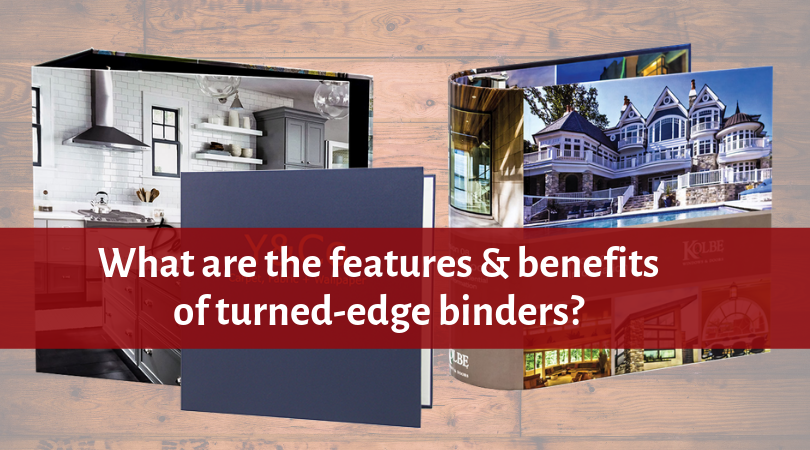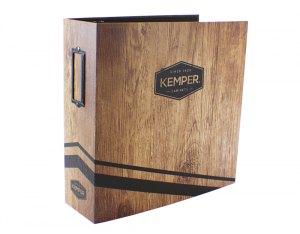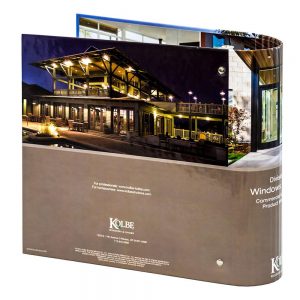
When you hear “turned-edge” think hard cover.
A turned edge ring binder is constructed much the same way as a hard cover book. It’s cover is usually printed on paper or cloth. The paper or cloth cover is then wrapped over chipboard and glued in place. You may also hear it referred to as a casebound binder. These are some of the features you might find in a turned-edge ring binder:
Widest possible assortment of finished “looks”
We can manufacture a binder that looks like wood-grain or metal using turned-edge manufacturing. It all comes down to the look you want the finished binder to have:
- Litho printed paper cover (label) can impart any look you desire.
- Printed litho wraps are usually laminated (gloss, matte, satin, etc.)
- Wide selection of coated paper finishes and colors available.
- Wide selection of coated and uncoated cloths available.
- A good choice when a particular texture is desired.

Large assortment of decorating techniques
When it comes to printing on turned-edge binders, you have a lot of freedom and flexibility to get just the right look. These are the decorating options available:
- 4CP offset and digital, spot color
- UV, varnish, aqueous
- Stamping – foil or other
- Embossing/Debossing
- Applique with same or different materials
- Different cover and liner materials/colors
Pockets can be added in several ways
Need pockets in your turned-edge binder? No problem. Here are the options for adding custom pockets:
- Adhesive backed clear vinyl pockets
- Vinyl pockets can be sealed on, if special liner stock is used (Kayhide).
- Pocket must reside inside the outer dimensions of the cover.
- Pockets can be “Cased” when the binder is constructed, usually in the same material as the cover or liner – Cleanest look but most expensive.
Turned edge binders are usually considered very durable
One of the features of turned-edge manufacturing is the durability of the binder covers. There some considerations, when it comes to construction that can impact durability:
- Cloth is typically more “durable” than paper, but durability is determined by the characteristics of the specific material choice.
- A material may be very “durable”, but if uncoated, it’s likely to stain easily.
- Heavier weights of chipboard can be used to enhance durability.
- 1 piece boards have creased hinges – more durable, less flexible.
- 3 piece covers are most flexible, and can have hinges reinforced.
- Routed hinges provide flexibility and a crisp look. This is Forbes standard.
- Spine can be creased multiple times for a rounded/curved effect.

Cost can be a factor with turned-edge binders
Turned edge binders are generally more expensive than vinyl and poly at lower quantities (<2,000). This difference has been reduced over the last several years.
- On quantities under 1,000 digitally printed wraps are more cost effective.
- Some high end paper and cloth cover materials have minimums.
- At higher quantities (2,000+), litho wrapped TE binders can be very cost competitive.
Still have questions about turned-edge binders? We are experts! Contact us today to get your questions answered!